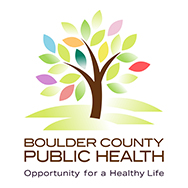Carbon Monoxide and Health Risks
Carbon monoxide is an odorless, colorless gas that can be fatal when breathed. Symptoms of carbon monoxide poisoning are similar to flu and allergies and, therefore, often go undetected. Low levels can cause nausea, dizziness, weakness, and muscle ache. Higher doses can impair judgment and cause paralysis, coma, and death.
Sources of Potential Exposure
- Flues or chimneys that become blocked, thus preventing exhaust gases from being vented to the outside.
- Fuel-burning furnaces with cracked or rusted heat exchanges allow combustion gases into the living spaces.
- Fuel-burning space heaters, ovens, ranges, or grills are operated in the home without adequate ventilation.
- Car exhaust from an attached garage that enters the home.
- Combustion equipment that is not working properly and causes incomplete combustion.
- Negative pressure balance between the inside and outside of the home prevents adequate combustion gas ventilation.
Dangerous levels of carbon monoxide gas build-up, usually because the exhaust of combustion appliances is not properly vented or when combustion equipment is not in good working order and is not regularly inspected for safe operation.
Prevention
- Install carbon monoxide detectors in your home. Ideally, place one detector in each bedroom.
- Have the furnace inspected every year. Detectors/alarms are designed to prevent accidental death, not at lower levels, that may cause symptoms such as regular headaches.
- Only use generators outdoors and keep them at least 20 feet from home.
- Do not warm up cars in attached garages.
- Replace detector/alarm batteries regularly, such as on the first day of each year, and replace detectors/alarms as per manufacturer instructions.
- Regularly have a qualified technician inspect fuel-burning appliances and chimneys.
- Ensure combustion equipment is installed correctly and used only for the intended purpose.
- Keep a list of the home’s smoke and carbon monoxide alarms and manufacturer instructions.
Regulations
- Carbon monoxide detectors/alarms are required in all homes built or transferred after September 1, 2009, and all apartments rented.
- Detectors/alarms must be on each floor of a multi-level home and within 15 feet of every sleeping area doorway.
- Alarms must be ANSI/UL 2034 Standard for Single and Multiple Stations.
Alarm Response
If the alarm sounds, do not try to find the source of the carbon monoxide.
- Immediately move outside to fresh air.
- Call 911.
- After calling 911, check that all persons are accounted for. DO NOT re-enter the premises until emergency responders have permitted you. You could lose consciousness and die if you go into the home.
- If a malfunctioning appliance is found to be the source of the carbon monoxide, DO NOT operate that appliance until it has been properly serviced by trained personnel.
- If authorities allow you to return to your home and the alarm reactivates, repeat the steps above.
- Call a qualified appliance technician to investigate sources of carbon monoxide from all fuel-burning equipment and appliances and inspect for proper operation. If problems are identified, have the equipment serviced immediately.
- Note any combustion equipment not inspected by the technician and consult the manufacturers’ instructions or contact the manufacturers directly. Make sure that motor vehicles are not and have not been operating in an attached garage or adjacent to the residence.



